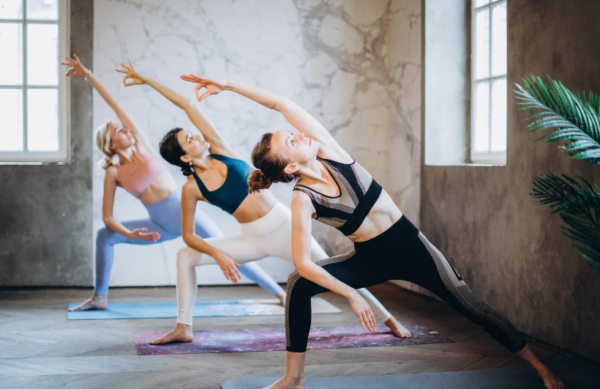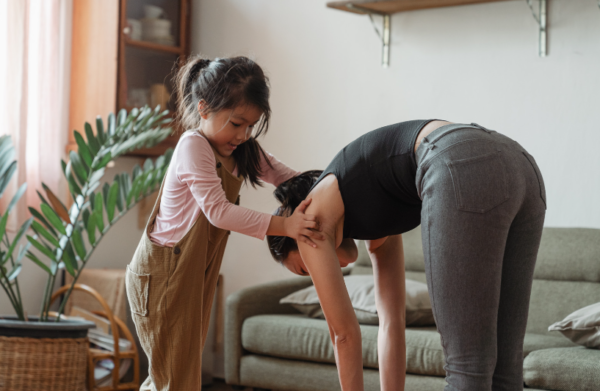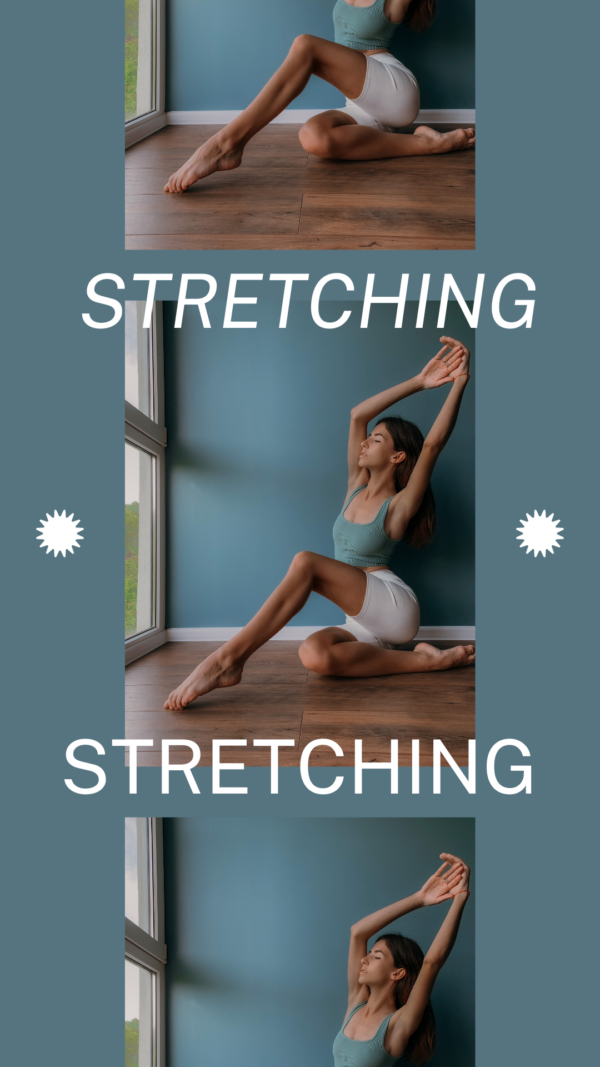Flexibility is the powerhouse of possibility. A fluidity of motion that grants the ability to bend and sway with the ebb and flow of life’s twists and turns, providing the means to forge one’s path and embark upon a journey of boundless fulfillment. Embrace flexibility, unlock your full potential, and seize the reigns of your destiny.
Flexibility is a vital component of fitness that frequently goes unacknowledged. Despite its significance, it can enhance your athletic prowess in a variety of physical pursuits, diminish the probability of incurring injury, and broaden your motion range. Yet, the conundrum that arises is: How long until one notices a transformation in flexibility? The reply is not a universal solution and varies based on multiple variables.
In this article, we will talk about how long does it take to improve flexibility?

How Flexibility Works
The term “flexibility” denotes the aptitude of a physique to traverse its entire motion range, or a system’s or organization’s ability to modify in response to changing circumstances or conditions. It represents an amalgamation of various physical traits such as muscle length, joint range of motion, and the elasticity of connective tissue. We can accomplish enhancing flexibility through stretching routines, yoga practices, and other physical activities that promote mobility. Maintaining flexibility is also crucial for overall physical wellness, injury avoidance, and superior athletic performance.
How to Measure Flexibility
Assessing your flexibility can play an essential role in monitoring your progress and determining which regions of your physique need extra attention through stretching and conditioning. Some of the most popular approaches to measuring flexibility are:
- The sit-and-reach assessment.
- The overhead reach evaluation.
- The shoulder stretch evaluation.
Each method provides a unique insight into your flexibility levels, enabling you to focus on specific areas for improvement.
Things you Should do To Increase Flexibility
To improve flexibility, the harmonious blending of stretching, physical activity, and diligence is crucial. Routine stretching of muscles and joints can elevate flexibility over time, particularly when executed post-workout when the muscles are warm.
Some of the best ways to improve flexibility are Dynamic stretching, which encompasses a full range of motion, and serves as an ideal warm-up before physical activity.
Integrating yoga into your regimen is also an excellent method to augment flexibility, as it encompasses a diversity of stretches and poses that focus on various muscle groups. Using a foam roller to target tight muscles can also help alleviate tightness and enhance flexibility. Including various physical pursuits, such as dance, gymnastics, or martial arts, can further boost overall flexibility by demanding the utilization of distinct movements.
Pre-stretching Tip
Before stretching or engaging in exercise, it is crucial to warm up the muscles with light cardio or dynamic stretching to ready them for the activity. To witness improvement, diligence, and consistency with stretching and flexibility work is of utmost importance, incorporating it into your routine. But, it’s important to listen to your body, begin slowly, progress gradually, and avoid pushing past pain. If you have any medical conditions or injuries, you should consult a doctor before starting a flexibility program.
Stretching Types to Improve Flexibility
as various methods and techniques, each offers unique benefits and drawbacks. The flexibility of a body is determined by a range of physical attributes, including muscle length, joint range of motion, and connective tissue elasticity, and can be improved through stretching exercises, physical activity, and more.
How to select the appropriate stretching technique?
Selecting the appropriate stretching techniques to suit one’s individual needs and goals is a complex decision-making process.
The types of stretching that can aid in improving flexibility include static stretching, dynamic stretching, PNF stretching, ballistic stretching, and active stretching, each with its distinct methodology and implementation. Static stretching involves holding a stretch for a set period, typically 10-30 seconds, in a relaxed manner.
Dynamic stretching, on the other hand, involves movement through a full range of motion to warm up the muscles and prepare for exercise. PNF stretching, a more advanced technique, involves contracting the muscle being stretched followed by a stretch.
Ballistic stretching, which involves bouncing or swinging into a stretch, is not recommended due to its risk of injury. Active stretching, in contrast, utilizes the strength of the individual’s muscles to hold a while, rather than relying on external props or partners.
Best stretching Type for improving flexibility
While dynamic stretching, characterized by movements that take the muscles through a full range of motion, is typically touted as the optimal choice, static stretching – with its prolonged holds.
Vigorous movements defining dynamic stretching, traversing the joints and muscles to their fullest extent, set it apart from static stretching which involves prolonged stillness. Unlike the static approach, dynamic stretching is characterized by continuous motion, often executed at a moderate pace.
The objective of dynamic stretching is to stimulate the body, boost flexibility, and minimize the hazard of injury. Frequently employed as a pre-workout regimen, dynamic stretching elevates blood flow, galvanizes muscle groups, and amplifies coordination.
Things that Improve Flexibility Faster
To achieve elevated flexibility, a combination of factors must converge consistency, proper warm-up, stretching frequency, progression, strength training, yoga or Pilates, and hydration. Regular stretching and flexibility training is pivotal for progress. Preceding any muscles-stretching or physical activity, warm the muscles with light cardio or dynamic stretching to prime them for improvement.
Elevated frequency of muscles-stretching, such as multiple sessions throughout the day, can hasten progress when compared to less frequent stretching.
Gradual intensification and elongation of muscles-stretching, as well as incorporating strength training, can foster overall muscle and joint wellness and result in greater flexibility. Some of the best ways to improve flexibility are Integrating yoga or Pilates into one’s regimen can also boost flexibility, balance, and stability. Maintaining hydration levels keeps muscles and joints elastic, promoting overall health.
Benefits of Being More Flexibility
The gains of suppleness are manifold, encompassing both physical and mental domains. ( Poor blood circulation in the legs ) On the physical front, increased flexibility begets improved posture, better athletic prowess, and reduced odds of injury.
The augmented range of motion and mobility from increased flexibility allows for the seamless execution of everyday tasks. Also, greater flexibility translates into enhanced circulation, which leads to a spike in energy levels, and a reduction in muscle soreness and stiffness.
The benefits of greater flexibility transcend the physical realm, affecting mental health as well. Increased flexibility eases muscle and joint stress, leading to improved balance and coordination, and has also been linked to enhanced relaxation and a sense of serenity, making it a crucial factor in maintaining overall physical and mental well-being.
How long Does it take to Improve Flexibility?
The journey to heightened flexibility is a unique, personalized experience, influenced by numerous variables, such as flexibility, starting point, age, overall health, and the diversity and repetition of flexibility exercises. However, with dedicated effort and unwavering consistency in incorporating stretching and other flexibility techniques into your routine(Improve Throttle Response), you can anticipate observing progress within a few months to several weeks. Bear in mind that flexibility enhancement is an ongoing journey that requires persistent and consistent exertion to sustain and bolster it. Heed your body’s signals, and proceed gradually and meticulously, to dodge injury. Supplementing your flexibility regimen with strength training and cardio can augment flexibility by strengthening muscles and boosting circulation.
Flexibility Improvement Duration
Flexibility Improvement Duration is a perplexing and multifaceted subject. On average, a period of 4 to 6 weeks with persistent stretching and exercise routines may evoke some level of improvement in flexibility. However, individuals over the age of 40 or with limited flexibility may require more time to experience significant change.
How long does it take to lose Flexibility?
The speed of flexibility decline is a complex phenomenon shaped by multiple factors, such as aging, physical inactivity, dietary habits, and overall well-being. The loss of elasticity in muscles and joints can manifest itself in a matter of weeks or even months, but this is only an average, as some individuals may witness a rapid decline in flexibility, particularly with advanced age or pre-existing health issues. To counter the loss of pliability and suppleness, it’s crucial to pursue a consistent physical activity, incorporate stretching into your regimen, and lead a healthy lifestyle with a balanced diet.
How long does it take to get Flexible with yoga?

The pace at which one’s flexibility transforms through yoga varies greatly and is a deeply personal quest. The tempo at which one begins to witness results could be influenced by several aspects, including their age, physical state, and the persistence and frequency of their yoga routine.
For some, the flexibility benefits of yoga may start to manifest in just a matter of weeks of committing to a regular yoga practice. Nevertheless, to attain substantial and enduring improvement, it is advisable to regularly practice yoga for several months to even a year.
It is crucial to remember that becoming more flexible is not a rapid or overnight process, but rather an endeavor that necessitates consistent and committed effort, patience, and persistence.
However, each individual’s body reacts differently to yoga, so it’s essential to be self-compassionate and celebrate every small progress made along the way.
Can you Become Flexible in your 30’s?

As the years pass by, the human body experiences a gradual decline in flexibility, elasticity, and recovery speed from exercises and injuries.
However, with proper training, dedication, and patience, it is entirely possible to attain increased flexibility, even in one’s 30s. Despite the natural aging process, the potential to enhance flexibility remains boundless, regardless of age.
To cultivate flexibility, incorporating a stretching routine that encompasses both static and dynamic stretching exercises is essential. Supplementing your fitness regime with practices such as strength training, yoga, or Pilates can significantly contribute to the improvement of flexibility and overall muscle and joint health. Maintaining a healthy diet and staying hydrated are also critical factors in preserving the elasticity of muscles and joints.
However, it’s crucial to approach the process with caution, avoiding exercises that cause discomfort or pain. Individuals with underlying medical conditions or previous injuries should seek medical advice before entering a flexibility program.
The road to increased flexibility may require more time, patience, and dedication compared to when one was younger, but with consistent effort, it is possible to achieve and enjoy the physical and mental benefits that come with it.
Common Mistakes to Avoid
In the pursuit of increased flexibility, countless individuals can fall prey to missteps that hinder their progress and even cause harm. The frequency and severity of these mistakes can be an important determinant of how quickly flexibility is improved. Let’s delve into the most prevalent mistakes that individuals tend to make and the impact they have on the rate of improvement.
Neglecting to Stretch Adequately
One of the gravest missteps made by people trying to improve their flexibility is not stretching enough. Regular stretching plays a crucial role in the enhancement of flexibility and should, therefore, be included in one’s fitness routine.
Incorrect Stretching Techniques
Another frequently committed mistake is improper stretching techniques. The utilization of incorrect stretching methods can lead to injury and slow progress, and it is, therefore critical to research the appropriate stretching techniques for each muscle group.
Overlooking Warm-Up and Cool-Down
It is quite common for people to overlook the significance of proper warm-up and cool-down procedures. A warm-up helps prepare the muscles for exercise and minimizes the risk of injury, while a cool-down reduces muscle soreness and stiffness.
Absence of Strength Training
Strength training plays an integral role in enhancing flexibility as it strengthens the muscles, making them more flexible. Unfortunately, many individuals tend to focus solely on stretching, neglecting the importance of strength training in their fitness routine.
Forcing Progress Too Rapidly
The final and perhaps the most frequent mistake is pushing oneself too hard. This can cause injury, slow down progress, and undermine overall flexibility improvement. It is essential to be mindful of one’s body and increase the intensity of stretching gradually over time.
With these common mistakes in mind, it is possible to make calculated decisions and avoid hindrances in one’s journey toward improved flexibility.
FAQ’s
Regaining flexibility may seem like a daunting task, but with the right approach and techniques, we can achieve it. To get started, it is important to establish a regular stretching routine, warm up before physical activity, and utilize foam rollers to release tight muscles. Dynamic stretching, which involves a full range of motion. Incorporating physical activities such as yoga or dance, It's also important to prioritize rest and recovery, allowing your muscles time to heal and repair.
Achieving a greater degree of flexibility is a gradual progression, requiring consistent and dedicated effort. The journey towards improved flexibility can be a complex and multifaceted process, subject to a variety of individual factors such as age, overall health, and starting level of flexibility. Nonetheless, with a persistent application, one can anticipate a discernible progression within a time frame of several weeks to several months. However, it is important to acknowledge that flexibility is not a one-time achievement but rather an ongoing process, requiring continual stretching and physical activity to sustain and further enhance it.
Accelerating flexibility advancement in a speedy window, such as a mere 3 weeks, is doable through persistent exertion. Still, the extent of the progression will vary depending on unique factors such as age, current physical condition, and existing health conditions. Embarking on a regimen that incorporates stretching, warming up, dynamic stretching, engaging in physical activity, and allowing adequate rest can indeed aid in catalyzing flexibility growth in a limited timeframe.
Achieving enhanced flexibility can be a formidable task for some individuals, but with persistent and unrelenting efforts, coupled with a combination of stretching, warm-ups, dynamic stretching, physical activity, and sufficient rest, improvement in flexibility can be attainable. Nevertheless, the level of improvement may differ based on individual factors and circumstances.
The reduction in flexibility that comes with age and inactivity can lead to stiff, tight muscles, hindering overall flexibility. But this decrease in elasticity can be exacerbated by multiple factors, including muscle imbalances, injury, and chronic ailments like arthritis. what is the fastest way to regain flexibility?
How long does it take to Improve Flexibility?
Can you improve Flexibility in 3 weeks?
Is flexibility hard to Improve?
What causes poor flexibility?

